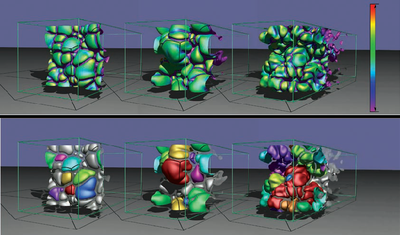Gastvortrag am 25. Juni: Peer-Timo Bremer (Lawrence Livermore National Laboratory, USA)
Im Rahmen unseres w√∂chentlichen Seminars wird Dr. Peer Timo Bremer am 25. Juni 2009 um 16:15 Uhr einen Gastvortrag halten. Die Veranstaltung wird im Raum F 435 des Hauptgeb√§udes (Stahlbausaal) stattfinden. Peer-Timo Bremer hat an der Universit√§t Hannover Mathematik mit Studienrichtung Informatik studiert und schrieb seine Diplomarbeit zum Thema ‚ÄěBoundary Simplification of a Triangulated Body‚Äú am Welfenlab, bevor er an der University of California, Davis seinen Doktortitel in der Informatik erwarb. Nach einem Aufenthalt an der University of Illinois forscht Dr. Bremer zur Zeit am Lawrence Livermore National Laboratory in den USA.
Exploring and Analyzing Large Scale Turbulent Combustion Using Topology
The advent of highly accurate, large scale simulations has made data analysis and visualization techniques an integral part of the modern scientific process. To develop new insights from raw data, application scientists need the ability to easily define features of interest and to understand how changes in the feature parameters impact the subsequent segmentation of the data. Therefore, simply exploring the raw data is not sufficient. Scientists need the ability to study the feature spaces implied by the data analysis methods used and to reliably understand if and how they may lead to proper feature extraction algorithms.
I will present a new topological framework that allows one to explore interactively the complete parameter space of a threshold based segmentation of an entire time-dependent simulation. By pre-computing hierarchical merge trees and their corresponding segmentations we store a complete family of segmentations in a compact yet highly flexible representation. While the resulting data is more than two orders of magnitude smaller than the initial input, it allows the user complete flexibility to segment, select, and track features. Furthermore, we augment the hierarchies with additional attributes, such as feature volume, and enable fast conditional sub-selection. We use this representation to create tracking graphs describing the temporal evolution of features in time and provide a linked view interface to explore the time graph interactively along side the segmentation. The system can be then used to perform extensive data analysis. We demonstrate the effectiveness of our approach using simulations of low-swirl turbulent pre-mixed flames. We show how the topological hierarchies efficiently encode burning cells, the primary feature of interest in this application, and how our system can provide new insight into the dynamics of the combustion process.
Zu diesem Vortrag laden wir alle Interessenten herzlich ein!
18.06.09, 15:32



